Decorative tiles for the kitchen: types and features

The kitchen is one of the most popular and favorite places in the house. The hostesses place high demands on the decoration of this room. It should be both aesthetically pleasing and practical. One of the most popular ways to decorate a work area in a kitchen is to use decorative tiles.
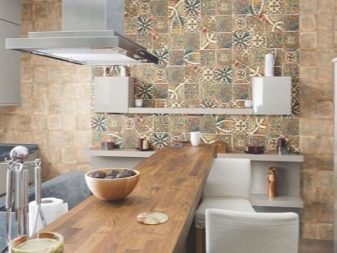
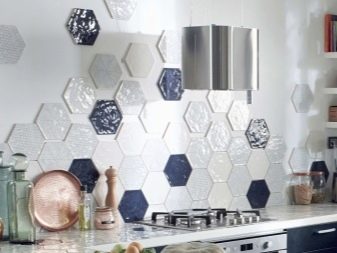
Types of decorative tiles
Natural stone
Decorative tiles for the kitchen made of natural stone are made of marble, quartz and granite. These materials are considered one of the most durable and are often used as cladding material.
The following advantages of natural stone products are noted:
- excellent wear resistance and unlimited service life;
- high abrasion resistance - decor made of natural stones lasts almost forever;
- resistance to mechanical damage, chips and scratches;
- environmental friendliness of natural material due to the absence of harmful substances in the composition.
The disadvantages of tiles can be considered:
- high price;
- the decor itself is quite heavy compared to other materials.
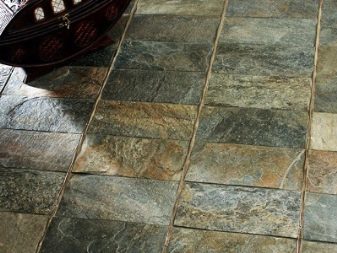
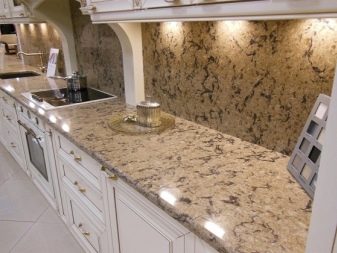
Artificial stone
Artificial stone decorative tiles are considered an excellent alternative to natural ones. It is made from cement and porous fillers. For color, dyes are added to the composition.
Among the advantages of the decor are:
- the lightness of the material, which greatly facilitates the work with it;
- a wide variety of textures, colors and shades, allowing you to quickly choose the right option for the interior.
Among the disadvantages:
- strength is significantly inferior to natural stone;
- the service life of an artificial stone is much lower than that of a natural one.
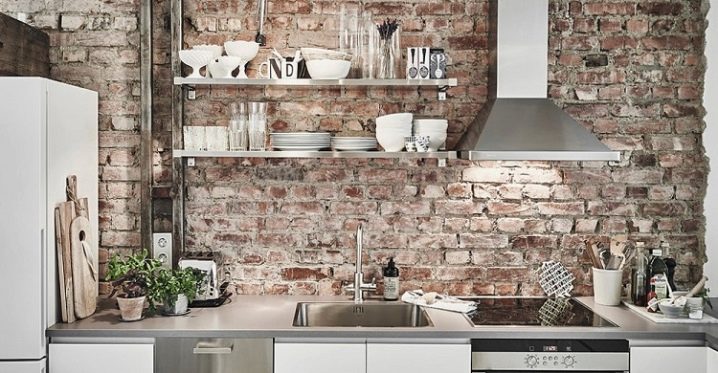
From plaster
Gypsum decorative tiles popular among decorators due to such qualities as:
- the ability to imitate any material;
- low weight of the plate and ease of work with it;
- the ability to lay plaster decor on any surface;
- the possibility of laying on a thin wall;
- the gypsum plate can be cut with a knife;
- heat and frost resistance, allowing you to work with the material and use it in any conditions.
Negative properties of gypsum as a facing material:
- increased fragility;
- predisposition to moisture absorption.
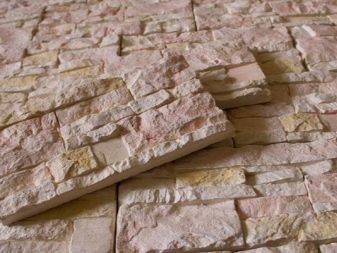
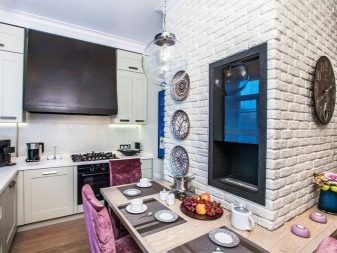
Decoupage tile
Decoupage is an applique. Often this technique is used to make decorative tiles for the kitchen with your own hands. To create a pattern, special paper, fabric or napkins are usually used, which are glued to the surface of the tile and covered with a special compound on top.
The advantages of decoupage are:
- beauty and originality;
- the ability to make unique decor for your own interior design;
- thanks to a special set of components, decoupage tiles do not differ in durability and ease of care from ordinary tiles.
The disadvantages of decoupage tile decor are:
- fragility of the surface;
- the need for careful handling and care.
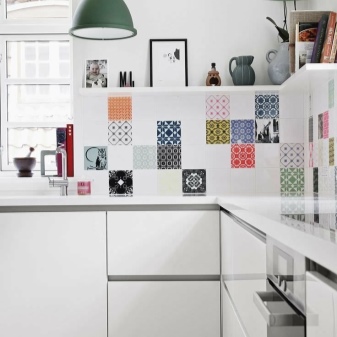
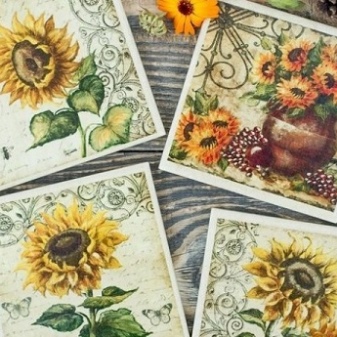
Glass
Decorating the working area in the kitchen with glass tiles is an original way to decorate and expand the space, to create sparkling walls. Glass tiles can be glossy, matte, colored and transparent.
Positive properties of glass decor:
- originality of performance;
- ease of care;
- simple styling technique;
- compatibility with almost all styles.
The negative aspects include:
- fragility;
- the service life is lower than that of similar stone decor.

Vinyl
Vinyl tiles are a multi-layer PVC coating on a polymer basis. Quartz chips are added to the composition of vinyl tiles, so this material is often called quartz vinyl tiles. The quartz layer acts as the bottom layer and base, a decorative pattern is applied to the middle layer, and the top layer is transparent polymers.
The undoubted advantages of vinyl decorative tiles for the kitchen are:
- ease of installation and repair;
- environmental friendliness and safety;
- wear resistance and durability;
- ease of care of the vinyl surface.
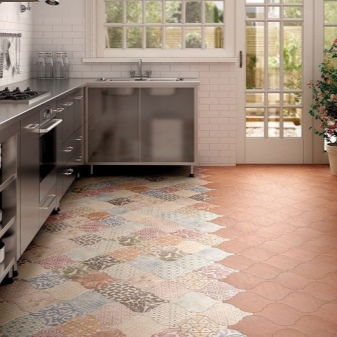
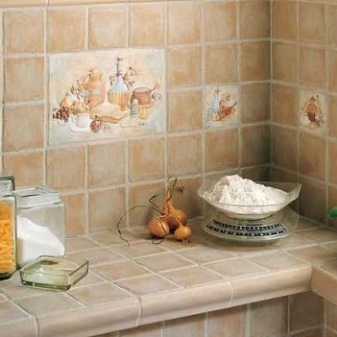
But this material also has disadvantages:
- susceptibility to high temperatures;
- a mandatory requirement - the working surface must be absolutely flat.
The technology for the manufacture of vinyl tiles provides the opportunity to create a variety of designs. Its shape can be either classical: square or rectangular, or it can be executed in the form of rhombuses and triangles. The color range of PVC is not limited by anything and the whole range of paints can be used here, including not only a single-color background, but also various patterns.

Vinyl stickers
Using vinyl decals is the fastest and most economical way to transform and create decorative tiles in your kitchen. Stickers consist of several layers: a backing, a sticker and a protective film.
Pros of vinyl decals:
- ease of use: in order to decorate tiles with vinyl stickers, no special tools and knowledge are required;
- the ability to quickly transform the kitchen: in order to stick one picture, it will take a few seconds;
- moisture and heat resistance: stickers are not afraid of vapors and temperature rise during cooking;
- easy to clean: in order to clean the surface of a tile with a vinyl sticker, simply wipe it with a cloth dampened in a common detergent.
Cons of vinyl decals:
- low service life in comparison with other decorative materials;
- change in appearance over time.
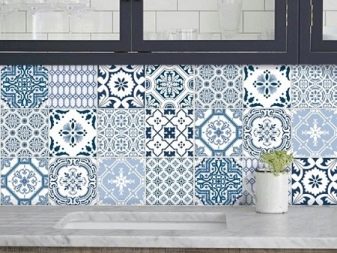
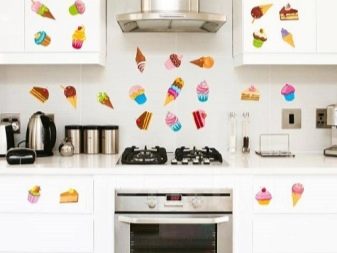
Design options for decorative tiles in the kitchen
Under the stone
The use of stone tiles is one of the most popular options for decorating an apron in the kitchen. This design is great for interior decoration of a kitchen room in a country style or in a classic style. Instances imitating granite or marble go well with wooden furniture in the kitchen, steel interior elements and fittings. Also, with the help of decorative stone tiles, you can decorate not only the working area in the kitchen, but also the eating area.
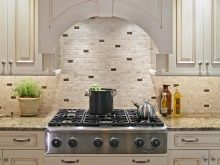
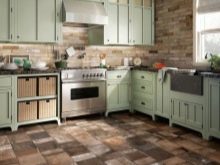
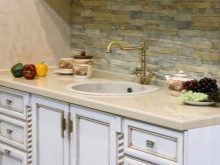
Under the tree
Ceramic tiles for wood look no different from wooden planks, but in many respects it turns out to be better than natural wood, especially in conditions of high humidity and high temperatures. Wood grain kitchen tiles are easier to clean and maintain. Modern technologies allow you to create an original texture and design of plates imitating natural wood and dyed wood.

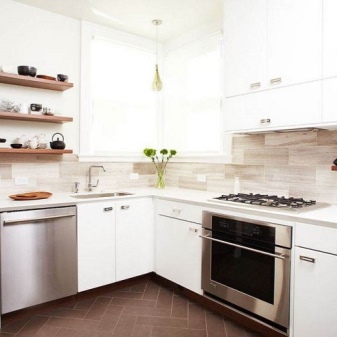
Metal
Decorative tiles for the kitchen with a metallic effect are appropriate in any interior, from high-tech to baroque, thanks to a wide range of designs. Options with silver, bronze, chrome and gilded surfaces are popular. There are also decors with an antique effect and even a rust effect.
The embossed surface of the metal decor can be smooth or textured, with dents and notches.
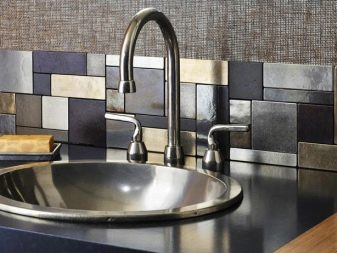

Painting
Painted decoration technique is one of the most time consuming and most beautiful. As a rule, scheduled work is done manually.The results of such work are quite catchy, they always attract attention and require a thorough study of the interior. The most popular are the painting with folk ornaments, patterns, flowers. Sometimes a drawing consists of several elements and this will require certain skills when combining them.
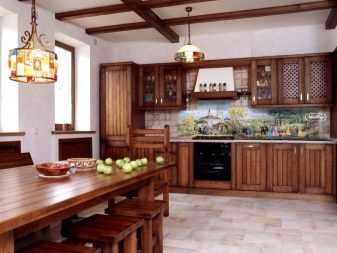

Photo printing
There are several ways to print a picture on a tile.
The most common are:
- sublimated printing;
- hot decal;
- burning;
- ultraviolet.
The first and second methods are similar to each other, they use an image on paper. The third method of surface printing involves the use of special powders and inks. The fourth method uses nano-ink, which dries quickly when exposed to ultraviolet rays.
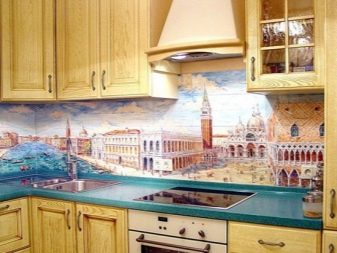
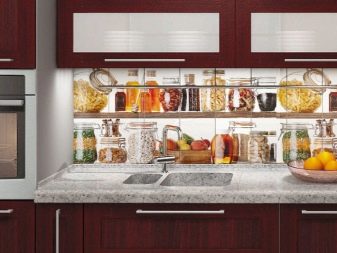
For information on how to lay decorative tiles in the kitchen, see the next video.













The comment was sent successfully.